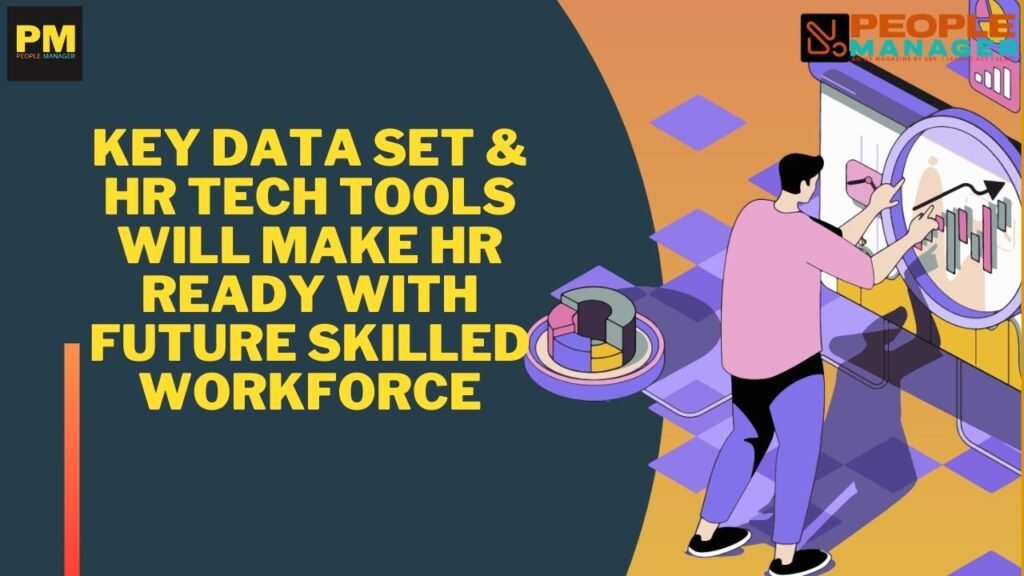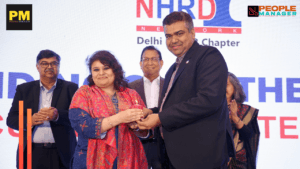Future Workforce Planning Requires Data, HR Tech & Strategies
For a skilled future workforce, successful succession planning is indeed a critical aspect of organizational strategy and requires a robust combination of data analysis and HR technology.

Future Workforce: Some industries, especially manufacturing, are facing significant challenges in attracting and retaining new talent as more Baby Boomers retire. Between succession planning and navigating candidate skills gaps during the recruitment process, some firms are looking at a very uncertain future.
As a result, HR will need to find effective ways to recruit Gen Z talent. If you haven’t yet experienced it firsthand, this demographic has different expectations from work than previous generations, and HR practices that worked 10 years ago may no longer be effective.
Essential Data for Succession Planning
The data sets to start capturing and analyzing now to strategically drive your organization’s succession planning are:
Turnover: What departments is it coming from and why? For example, is turnover concentrated in the first few months of employment? This could indicate a problem with onboarding or unrealistic expectations set during the recruitment process.
Time-to-fill: How long does it typically take to fill open positions? Are you prioritizing speedy hires over quality hires, potentially leading to hiring the wrong person who leaves quickly?
Skills gaps: What skills will your workforce need in the future to meet changing business demands? Identifying these will help you target recruitment efforts and develop training programs.
For data, look broader and not just at the company’s data, but… data across industries and look at [data from] the Bureau of Labor Statistics. If you are a company that doesn’t have your own internal data that you’ve collected and can look historically back on, broaden your lens. Data’s out there, and it’s out there for specific industries.
HR Tech Solutions for Succession Planning
Applicant tracking systems that allow for texting and other communication methods preferred by Gen Z applicants will be a key tech tool. It used to be that we could call up applicants and schedule interviews. Nobody answered a phone call today, Can we push out scheduling options to applicants in the way that they want it delivered to them, in the way that they’re comfortable communicating?
State-of-the-art learning and development platforms that provide Gen Z employees with opportunities for growth and career development, which they highly value, will be another wise investment.
With a data-driven approach to succession planning, you may also have to utilize AI-powered data analytics platforms that are able to glean insights from your HR data and identify important trends.
Additional Succession Planning Strategies
By understanding the needs and expectations of Gen Z, HR can prepare their workforce for the next five to 10 years:
Career Pathing: Tap into long-term career aspirations. Gen Z wants micro-promotions. They want to see that their efforts are being rewarded. They want learning and development. So how are you going to help them continue to progress — whether it’s in one position or as they continue to ascend in your organization? Because now you’re competing, not only with all the other organizations, but with the gig economy.
Rethinking onboarding: Provide opportunities for Gen Z employees to connect with co-workers and learn about company culture. As new people walk in the door, they can’t feel the cold shoulder from the existing employees.
What is suggested for skilled future workforce planning?
Absolutely. For a skilled future workforce, successful succession planning is indeed a critical aspect of organizational strategy and requires a robust combination of data analysis and HR technology. Here’s what to do:
Essential Data for Succession Planning: It’s important to capture and analyze data sets that can strategically drive your organization’s succession planning. This includes understanding turnover rates and reasons, time-to-fill for open positions, and identifying future skills gaps.
HR Tech Solutions: Utilizing applicant tracking systems that cater to the communication preferences of younger generations, like Gen Z, is vital. Additionally, investing in state-of-the-art learning and development platforms can provide employees with growth opportunities, which are highly valued.
AI and Analytics: A data-driven approach may involve AI-powered data analytics platforms capable of extracting insights from HR data and spotting important trends.
Succession Planning Process: It involves selecting and developing key talent to ensure continuity of critical roles. This process is about identifying top performers and potential leaders, then mentoring and developing them to advance in the organization.
Importance of a Plan: Despite its significance, many organizations lack a formal succession plan. It’s essential to have a solid plan in place to ensure positions are filled by people equipped to do the job.
For a more detailed exploration of succession planning, including best practices and a framework any organization can apply, you might want to delve into the resources available on this topic here. If you’re looking to implement or improve succession planning in your organization, consider going with the Succession Planning Certificate Course.
Read more HR news like this on PropleManager.co.in
Value our content… contribute towards our growth. Even a small contribution per month would be of great help to us. Since our establishment, we have been serving the industry through daily news and updates.
Our content is free for all, and we plan to keep it that way
Support the People Manager. Pay Here
- AI in HR: Why ROI Isn’t the Right Question—Yet - September 8, 2025
- The Hidden Cost of Fear in the Workplace: Why Generational Optimism Isn’t Enough - September 2, 2025
- Forced Resignations in India’s IT Sector: A Legal Blind Spot Demanding Urgent Reform - August 19, 2025










1 thought on “Future Workforce Planning Requires Data, HR Tech & Strategies”